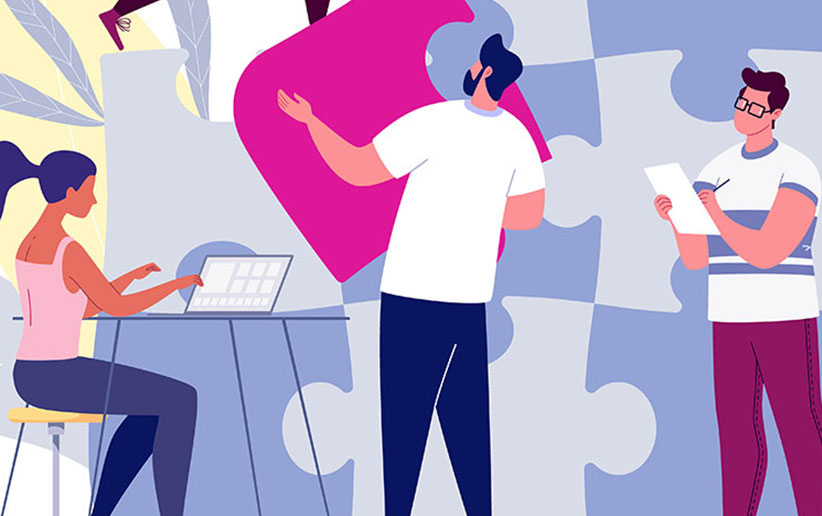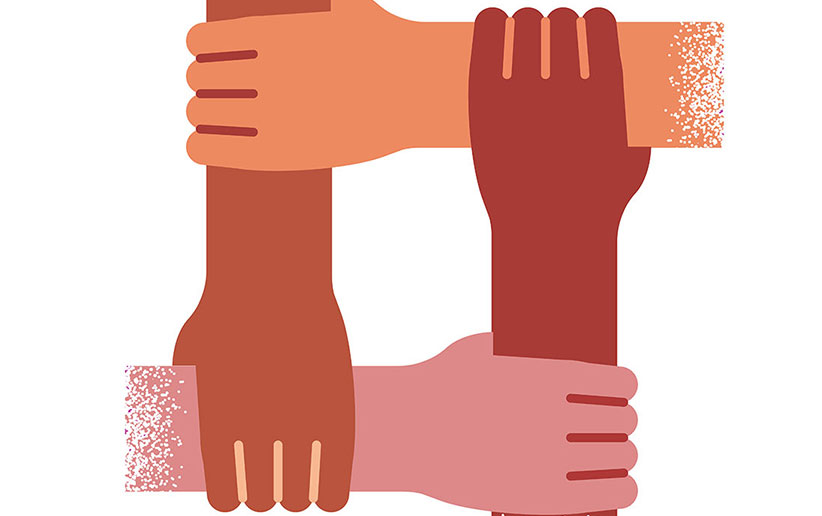When I was a newly licensed therapist, nearly 20 years ago, it was even rarer to have access to an Indigenous mental health provider. As a marriage and family therapist, I often heard comments like: “It is so easy to talk to you,” “You understand me,” and “You are not judging me.” These comments were often followed by an appreciation that I am an Indigenous provider. Many more clients over the years shared stories of discrimination and mistreatment at the hands of other non-Native providers.
This pattern of discrimination/mistreatment has also been identified in the research, including experiences of microaggressions and overt disrespect for Indigenous clients’ cultural practices and health beliefs (Findling et al., 2019; Walls et al., 2015). Having a provider of the same racial or ethnic group can provide a sense of safety for clients, allowing them to heal from past trauma and harmful experiences with previous providers. This need for cultural safety in therapy is why I have dedicated my career to doing the necessary research and building culturally responsive programs to address the well-documented disparities experienced by Indigenous individuals and families (Indian Health Service, 2019).
My career has given me the opportunity to teach and mentor generations of up-and-coming mental health providers. I sought out opportunities to bring on Indigenous providers and students whenever possible. In fact, within the programs I helped launch at the Mino Bimaadiziwin (“good life” in Ojibwe) Wellness Clinic in Minneapolis, MN, 89% of our staff and providers are Indigenous. This is a huge feat considering the state’s mental health providers are 88% White.
Recruitment
There are a number of strategies we use to recruit staff that might be helpful for others looking to recruit Black, Indigenous, and People of Color (BIPOC). The first and most important strategy is building connections and regular community engagement. I have worked in the local Indigenous community for nearly 20 years and have personal connections with other Indigenous-serving organizations. These organizations help by sharing job postings on their bullet boards and even within their personal networks. I also regularly make new connections and build on existing relationships by attending community events such as open houses (typically held annually) and cultural events. I found that social media can also be a useful tool to share open positions far and wide, especially within Indigenous community groups. Social media helps connect us directly with potential candidates and invite them to come by for a conservation and tour our state-of-the-art facilities. There is also one local Indigenous community-specific email listserv on which we regularly post positions.
I maintain relationships with faculty and administrative staff from clinical training programs at the local universities. I have built some of these relationships by teaching practicum and other master’s level courses. I also made many of these connections from my time as a doctoral student in the Family Social Science/Marriage and Family Therapy program at the University of Minnesota. A few times a year we receive inquiries from practicum candidates looking to be placed in an Indigenous serving site. We heavily invest in our master’s and doctoral level students, including putting them on payroll with the hopes they would come to love working for us and stay. This approach has been most successful for retaining staff after graduation. For example, we have hired students as care coordinators where some of their coordination work is billable (not applicable in every state) and another portion of their hours are dedicated to their practicum, providing direct care under supervision of a licensed provider. This allows us to remove some of the financial burden of school, provide employment benefits, and provide more intensive training before they graduate. We also pay practicum students through stipends when a position is not available. Students receive one-on-one supervision, group consultation, access to Elder-in-Residence (a professional role held by an Indigenous elder/community member), and access to additional training we provide and/or recommend. Once students graduate, they receive an increase in pay and their role shifts solely to providing direct care. Providers also receive a pay increase when they become fully licensed. Additionally, we applied to become a National Health Service Corp (NHSC) site, so licensed providers are eligible for loan repayment. Due to the shortage of mental health providers and the vast need in our community, we were able to secure designation as an NHSC site which helps recruit and retain talent.

We also host an annual open house at which we offer tours and ensure the community knows about our programs and open positions. At the open house, we provide a meal, which is customary in Indigenous traditions during celebrations, community gatherings, and when one invites another into their space. Most recently, we hired a popular local Indigenous food truck, which was a big hit. For our non-clinical positions, we have recruited from local tribal colleges and even offered to pay for training needed to obtain necessary certifications (e.g., peer recovery coaches, community health workers). Most of our positions are filled through these word-of-mouth and networking strategies. Although we receive plenty of applicants from Indeed and similar sites, these candidates rarely have experience working in or with the Indigenous community. We often screen out those who do not exhibit cultural humility and lack cultural understanding and connection to Indigenous communities. When staff and providers are from Indigenous communities, they are able to provide additional traditional healing support such as offering traditional medicines (Myhra et al., 2023). Likewise, the cultural match of Indigenous provider-client may result in more understanding due to shared experiences/historical trauma, related empathy, and cultural humility (Myhra et al., 2023). Additionally, I have the honor of working for my tribe, which is a sovereign nation. As such, I am able to prioritize hiring applicants who are from our tribe and other Indigenous tribal groups.
Retention
Similar to recruitment, retaining Indigenous staff and providers requires a multifaceted approach including ongoing training and development opportunities, a wellness focused environment, and culturally responsive leadership. It is important to establish an open-door policy and seek out feedback about staff experiences in the workplace. Inquiring about additional support that may be needed is prudent for new and seasoned providers alike. Importantly, we are prepared to address experiences of workplace microaggressions and discrimination as they are happening in order to shift workplace culture.
Professional development is important for a fruitful and lengthy career as a mental health provider. Licensed staff who are eligible to become clinical supervisors are encouraged to do so. We help pay for clinical supervision coursework or training and provide supervision-of-supervision throughout the credentialing process. Staff and providers need opportunities to grow their knowledge and skills because it is a requirement of our licensing boards, but it also contributes to personal and professional fulfillment, strengthening the team overall. Staff are encouraged to identify areas of interest to receive additional training and gain expertise. Additionally, we are intentional about mentoring Indigenous staff and providers for future opportunities for advancement and promotion.

Preventing burnout is at the top of mind for many leaders and clinical supervisors. Providing mental health therapy to those with both current and historical trauma, such as those in Indigenous communities, can lead to compassion fatigue (Figley, 1995) without the right support in place. Indigenous providers may experience stress or be triggered by stories that reflect their own experiences of racism, discrimination, and historical and intergenerational trauma (Myhra et al., 2023). It’s important to keep in mind that Indigenous communities today are still experiencing systemic racism and are fighting to protect their treaty rights, sovereignty, and land and water from exploitation. Many workplaces only offer clinical supervision or consultation until providers reach licensure, but we have found ongoing consultation to be essential for both a sense of community and ongoing peer learning and development. Some of our providers participate in additional reflective supervision groups and BIPOC Affinity groups offered for free through our state’s Department of Human Services. Leadership encourages staff to engage in these groups and provides time in their schedules to attend them, which also helps with retention and prevents provider burnout. I recommend including an Elder-in-Residence in the group consultation process to center Indigenous values and beliefs when serving Indigenous communities.
Indigenous researchers have found that Indigenous clients value culturally responsive community-based settings for therapy
As leaders and providers, we have a responsibility to model good health behavior and maintain good mental health. This requires balancing the mind, body, and spirit in our day-to-day lives. We have promoted self-care through wellness retreats and encouraging staff to use their generous paid time off, rather than glorifying excessive hours and long days. We also provide wellness-related office supplies. Popular wellness supplies in our office include standing desks, Seasonal Affective Disorder (SAD) lamps, aromatherapy diffusers and oils, and yoga mats. We also have a treadmill in our breakroom for those who need a boost in energy when the weather is not cooperating with us. Additionally, creating an Indigenous-specific therapeutic environment is important to both clients and staff/providers alike. This includes art and music that represent our local Indigenous community and access to traditional medicines at the front desk and in the providers’ offices. Indigenous researchers have found that Indigenous clients value culturally responsive community-based settings for therapy (Wendt & Gone, 2012). In fact, these sessions are rated as smoother, more positive, and less emotionally arousing (Myhra et al., 2023).
Retaining Indigenous staff and providers may require revamping policies and procedures to better fit the values and beliefs of the Indigenous community. For example, bereavement policies may need to expand. In many Indigenous communities, funerals and burial ceremonies can last several days in length and the standard 2-3 days may be inadequate. Additionally, bereavement policies often describe “close family” as parents, siblings, and children. However, in many Indigenous communities, close family relationships extend to aunts, uncles, and cousins who are like second parents or siblings. Other common policy-related needs include flexible hours to pick up children as well as hybrid solutions that allow for some work-from-home hours, thereby reducing the stress of commuting and juggling family demands while promoting self-care.
Given the critical shortage of mental health providers across the United States (U.S.) and small Indigenous population, which is 1.3% of the U.S. (U.S. Census Bureau, 2022), it is important that leaders and administrators actively work to reduce bias and discrimination by securing the necessary training and support. However, this training did not exist. Therefore, I collaborated with fellow Indigenous doctoral-level marriage and family therapy colleagues, Drs. Melissa Lewis and Erica Hartwell, to develop and evaluate training curriculum that improves providers’ understanding of the issues facing Indigenous people. Additionally, our curriculum builds provider knowledge to reduce stereotypes, increases provider self-awareness to address bias, and teaches effective, culturally responsive interventions (Lewis, Myhra et al., 2023; Lewis, Hartwell, & Myhra, 2018). This training increased participants’ Indigenous knowledge as well as their ethnocultural empathetic awareness. Over time, a longer version for medical students was developed and had similar results. It also significantly increased knowledge of Indigenous health, cultural intelligence, and ethnocultural empathy of participants who took the training (Lewis, 2020; Lewis & Prunuske, 2017). This work highlighted the need for even more comprehensive training that engaged the local Indigenous elders and leaders in an advisory capacity and led to the development of the Indigenous Health Toolkit (IHT; Lewis, Modde et al., 2023). The IHT training is a seven-module training (90 minutes each) facilitated by subject matter experts on 1) Social Justice, 2) Cultural Empathy, 3) Indigenous History of Colonization and Resilience, 4) Effects of Colonization: Historical Trauma, Inequity, and Health Disparities, 5) Indigenous Culture and Healing Practices, 6) Indigenous Health Equity: The Indigenous Patient-Provider Relationships, and 7) Decolonization of Health Systems. IHT has been successfully tailored to Indigenous communities in Minnesota and New Mexico and has even been found to reduce racial bias (Lewis et al., 2022).
Conclusion
There is much work to do to build culturally responsive mental health systems needed in Indigenous communities. The idea of Indigenizing therapy has been well addressed (Duran, 2006). However, Indigenizing our workforce and workplaces requires more effort to integrate Indigenous values, beliefs, and practices into health systems. Recruitment and retention of BIPOC providers is only a part of the solution. We also need to address the root cause of health disparities, that is structural racism. In Minnesota, some of our governmental departments and health systems are adopting anti-racism agendas to address structural racism that has led to and maintains the health disparities experienced by the local BIPOC communities. I have had the honor of serving on several community advisory boards leading this important work. It is tempting for administrators to blame factors other than structural racism when explaining health disparities and discriminatory practices within our healthcare systems. This work requires courage to shine light on areas that require growth, call for change, set new standards for care, establish processes for monitoring and measuring change, and insist on accountability. The most successful and impactful advisory boards I have been a part of have been led by a multidisciplinary team of diverse community members who represent those served by the system. Indigenous elders and leaders implore providers and administrators to treat those in their care as a relative. An Indigenized workforce and workplace values and operates from a space of interconnectedness and all deserving of respect and dignity.
Further Reading:
Medical Family Therapists’ Approach with Native Americans
Native American Behavioral Health Challenges
Suffering In Silence: The Invisible Minority and How MFTs Can Help

Laurelle Myhra, PhD, LMFT, is a band member of Red Lake Band of Chippewa Indians and directs the tribes’ Mino Bimaadiziwin Wellness Clinic in Minneapolis, MN. She is an AAMFT Professional member holding the Clinical Fellow designation, a licensed Marriage and Family Therapist, and her research focuses on Indigenous mental health and training for health professionals.
Duran, E. (2006). Healing the Soul Wound: Counseling with American Indians and other Native Peoples. Teachers College Press.
Figley, C. R. (Ed.). (1995). Compassion Fatigue: Coping with Secondary Traumatic Stress Disorder in Those Who Treat the Traumatized. Brunner/Mazel.
Findling, M. G., Casey, L. S., Fryberg, S. A., Hafner, S., Blendon, R. J., Benson, J. M., Sayde, J. M., & Miller, C. (2019). Discrimination in the United States: experiences of Native Americans. Health Services Research, 54 Suppl 2(Suppl 2), 1431–1441. https://doi.org/10.1111/1475-6773.13224
Indian Health Service (2019). Disparities. Retrieved from https://www.ihs.gov/newsroom/factsheets/disparities/
Lewis, M. E. (2020). The effects of an Indigenous health curriculum for medical students. Medical Science Educator, 30, 891–903. https://doi.org/10.1007/s40670-020-00971-8
Lewis, M. E., Hartwell, E., & Myhra, L. L. (2018). Decolonizing mental health services for Indigenous clients: A training program for mental health professionals. American Journal of Community Psychology, 62(3-4), 330-339. https://doi.org/10.1002/ajcp.12288
Lewis, M. E., Modde, E., Kamaka, M., Maresca, T., Horner, M., Hudson, S., & Myhra, L. (2023), Development of the Indigenous Health Toolkit. International Journal of Indigenous Health.
Lewis, M. E., Myhra, L., Bishop, C., Wildcat, S., Stately, A., & Smith, J. (2022, August). Indigenous Health Toolkit: Results of a pilot test from two sites. Association of American Indian Physicians Conference.
Lewis, M. E., Myhra, L. L., Hartwell, E. E., & Smith, J. (2023). Effects of a decolonizing training on mental health professionals’ Indigenous knowledge and beliefs and ethnocultural empathy. American Indian and Alaska Native Mental Health Research (Online), 30(1), 136–150. https://doi.org/10.5820/aian.3001.2023.136
Lewis, M. E. & Prunuske, A. (2017). Development of an Indigenous health curriculum for medical students. Academic Medicine, 92(5), 641-648. https://doi.org/10.1097/ACM.0000000000 001482
Myhra, L. L., Gone, J. P., Barry, D. T., Cutter, C. J., Faria, A. B., & Beitel, M. (2023). Session quality and impact in psychotherapy with American Indian clients. Psychological Services, 20(Suppl 1), 86–93. https://doi.org/10.1037/ser0000634
United States Census Bureau (2022). QuickFacts. Retrieved from https://www.census.gov/quickfacts/fact/table/US/RHI125222
Walls, M. L., Gonzalez, J., Gladney, T., & Onello, E. (2015). Unconscious biases: racial microaggressions in American Indian health care. Journal of the American Board of Family Medicine: JABFM, 28(2), 231–239. https://doi.org/10.3122/jabfm.2015.02.140194
Wendt, D. C., & Gone, J. P. (2012). Rethinking cultural competence: insights from indigenous community treatment settings. Transcultural Psychiatry, 49(2), 206–222. https://doi.org/10.1177/1363461511425622
Other articles
Increasing Belongingness for the Future of MFT Programs, the Field, and Our Association
Social, environmental, and contextual stressors can lower students’ academic pursuit for post- secondary education and professionals’ engagement with the field and AAMFT, and often create barriers to success.
April Lancit-Harmon, MFT, Nisan Ilkmen, PhD, and DeAnna Harris-McKoy, PhD
Making Social Justice “Stick”
Social justice is a term that is frequently heard in marriage and family therapy (MFT) training programs. However, there is evidence that suggests that even when social justice is taught and discussed in the learning environment, it doesn’t end up in practice later.
Lisa Rene Reynolds, PhD, Razan Masri, and Palmer Skudneski
Growing Diversity in the Field of Marriage and Family Therapy
Marc Fernandez, an internship coordinator for Iona University’s Marriage and Family Therapy Program, as well as an adjunct professor, and Christiana Awosan, associate professor, recently sat down for a discussion about growing diversity in the profession and, in general, ways in which they have seen an increase in the diversity of their student populations.
A Conversation with Marc Fernandez, MS, and Christiana Ibilola Awosan, PhD, at Iona Family Therapy Center, New York




